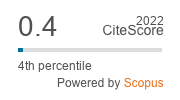In vitro rearing of brinjal shoot and fruit borer, Leucinodes orbonalis (Guenée) (Lepidoptera: Crambidae) on artificial diet
DOI:
https://doi.org/10.33307/entomon.v41i2.168Keywords:
Brinjal, Leucinodes orbonalis, artificial diet, rearingAbstract
The brinjal shoot and fruit borer (BSFB), Leucinodes orbonalis (Guen©e) (Lepidoptera: Crambidae) is a key pest of brinjal. Studies were carried out on the development of its in vitro rearing on artificial diet on a large scale. An artificial diet without natural ingredients of brinjal is found to support the growth and development as good as or better than natural brinjal fruits. The BSFB takes 26.25 days to complete life cycle on artificial diet as compared to 25.42 days on natural brinjal fruits (var. Pusa Kranti). On the contrary, other traits viz., 13 day old larval weight, 2 day old pupal weight, % pupation, % adult emergence, adult longevity and fecundity of the BSFB on artificial diet are either better or is at par with those on the natural brinjal fruits. The artificial diet has a shelf life of 75 days at 4 0C. Thus, the artificial diet is useful for quality and economic production of insects under aseptic conditions on the basis of rearing at 27 0C, 60-75% rh and 13 hr photophase for more than 56 generations without fortification with field populations. The prospects of this method being useful for studies on various aspects of BSFB management including insect resistance management in insect protective transgenic brinjal are discussed.
Downloads
Published
How to Cite
Issue
Section
License
Copyright (c) 2016 ENTOMON

This work is licensed under a Creative Commons Attribution-ShareAlike 4.0 International License.


